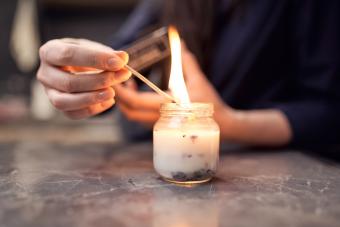
It's essential to know how to keep rubber from cracking. Why? Because you have rubber all over your home. Learn ways to store and condition your rubber to prevent cracking and drying out. Find out why rubber degrades and how to make it last.
How to Keep Rubber From Cracking
Rubber is prone to degrading and cracking with time. Rubber is a naturally sticky substance that is put through a vulcanizing process to make it hard and smooth. This process makes rubber great for the soles of shoes, rubber coatings on tools, and kitchen wear. To keep your rubber from cracking, it's all about storage and conditioning.
-
Store rubber at room temperature
-
Avoid exposure to UV light
-
Wash rubber with gentle cleaners
-
Keep conditioning to a minimum to restore softness
-
Store rubber objects in airtight containers
Sticky Rubber Syndrome
No matter how diligent you are, rubber will eventually degrade and become sticky. Preservation and conditioning methods can keep the rubber soft, but over time it will break down. When rubber flexes or stretches, there is nothing you can do to restore the rubber. You can patch it, but the rubber molecules' degeneration can't be repaired. Once you learn how to clean sticky rubber, your items will last longer.
How to Keep Rubber From Drying Out
To prevent the rubber from drying out or to restore the softness to rubber that is getting dry or cracked out, your first thought might be to reach for petroleum-based products, but don't. This can contribute to the degrading of the rubber. Instead, you want to reach for items specifically designed to seal and protect the rubber. Explore commercial and homemade conditioners for keeping your rubber supple.

Commercial Rubber Conditioners
When it comes to rubber products around your home, there are a few go-to commercial rubber conditioning and preservation products you might want to try.
-
Nextzett Rubber Care Stick Gummi Pflege is a water-based preserver for rubber used on tools, seals, and shoes.
-
WD-40 Silicone spray can work to help restore the softness of all different types of rubber seals.
-
ArmorAll is a go-to for rubber seals in cars that are prone to drying out and cracking.
When using these products, make sure to follow the instructions on the container.
Homemade Rubber Conditioner
Commercial products for rubber softening and restoring are all over the market. However, there is a very simple solution for restoring rubber using rubbing alcohol and wintergreen essential oil. To create this rubber softener, you need:
-
Rubbing alcohol
-
Wintergreen essential oils
With your materials at the ready, it's time to create your solution and get soaking.
-
Create a 3:1 mixture of alcohol and wintergreen essential oil.
-
Submerge your rubber item entirely in the mixture.
-
Allow it to soak for 2-24 hours.
-
Pull the rubber item out and check for softening.
-
Repeat until the rubber is softened to the desired amount.
How to Soften Rubber With Heat
Heat can also be used to soften the rubber. However, the effects are not long-lasting. To soften the rubber with heat, you need a hairdryer or oven. If the rubber item has plastic pieces, use the hairdryer.
To use the oven method, follow these steps:
-
Heat the oven to 200.
-
Put the item in the oven for about 10 minutes.
-
Cool and check the rubber.
Alternatively, you can use a hairdryer to heat on the rubber for about 10 or so minutes. It's essential to be sure not to overheat the rubber. If the rubber item has plastic pieces, use the hairdryer over the oven.
Prevent Rubber From Cracking
No matter how much care you take with your rubber items, they will break down. That's just the nature of rubber. However, there are several things you can do to make sure you preserve and protect your rubber.







